This is a followup to the D&D.Sci post I made last week; if you haven’t already read it, you should do so now before spoiling yourself.
Here is the web interactive I built to let you evaluate your solution; below is an explanation of the rules used to generate the dataset. You’ll probably want to test your answer before reading any further.
Ruleset
(Note: to make writing this easier, I’m using standard D&D dice notation, in which “3+4d8” means “roll four eight-sided dice, sum the results, then add three”.)
Enemies
Sharks
Sharks are 1/6 of encounters.
They attack in groups of 2+1d4, each of which does 1d10 points of damage.

Demon Whales
Demon Whales are 1/14 of encounters. (If that fraction seems high, you’re failing to account for all the sunk ships that couldn’t report encountering them.)
An attack from a Demon Whale does 17d12 points of damage.
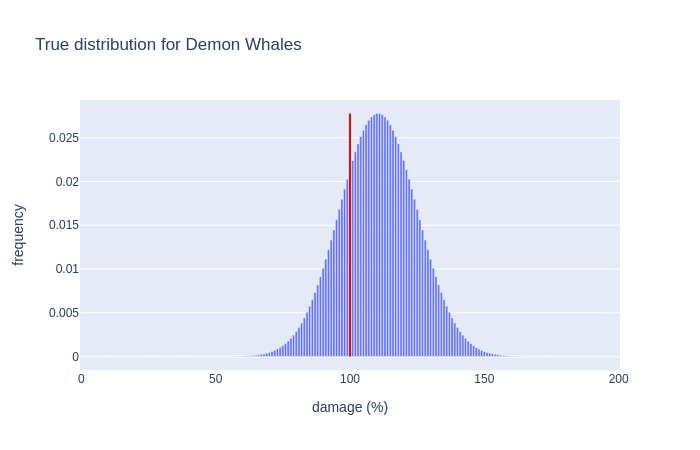
Crabmonsters
Crabmonsters are 1/14 of encounters.
A Crabmonster repeatedly rolls 1d80 as it tears through the ship, adding a point of damage with each roll, until it rolls a 1 (that is, encounters someone or something that stops it).

Pirates
Though the Navy’s records don’t bother to distinguish, Pirates come in two categories: Brigands (local criminals who had the poor fortune to cross paths with Naval supply ships while flying the black flag, and/or to mistake them for civilian cargo ships) and Privateers (agents of an enemy government, harassing your Navy’s fleet using hit-and-run tactics). Brigands are 1/6 of random encounters during your voyages, Privateers 1/21.
A fight with Brigands does 4d8 points of damage; a fight with Privateers does 6d12.
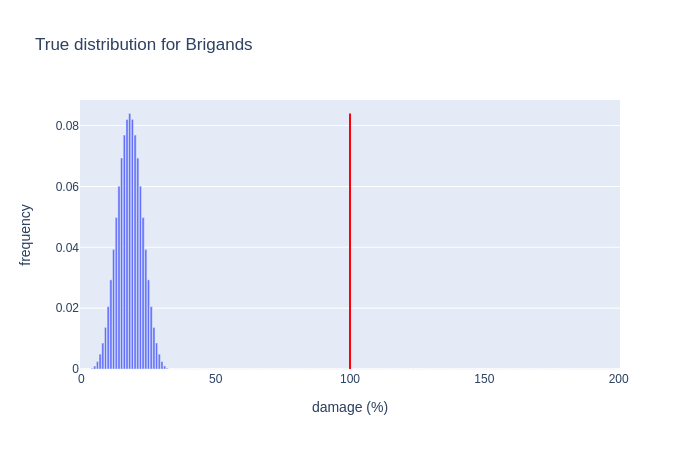
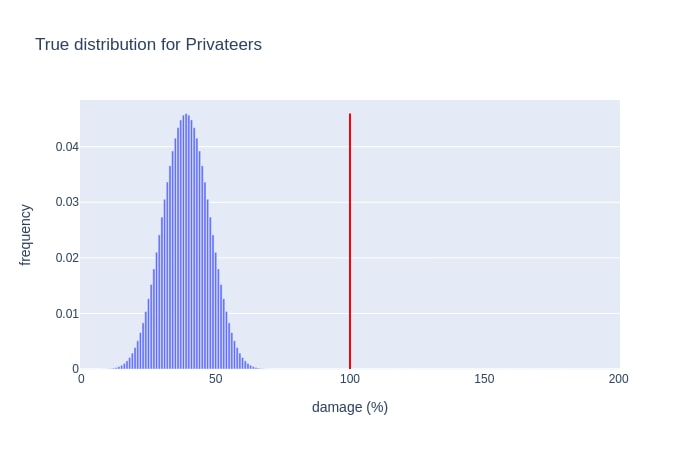
Merpeople
Surface-dwellers are unaware of the intricacies of underwater society, and record both Atlantean Merfolk (1/14 of encounters) and Alexandrian Merfolk (2/21 of encounters) as “Merpeople”. Fortunately, the two city-states are close enough politically that befriending one will cause them both to allow you free passage.
Atlanteans do 20+3d20 damage; Alexandrians do 1d8*1d8*1d8+1d20 damage.
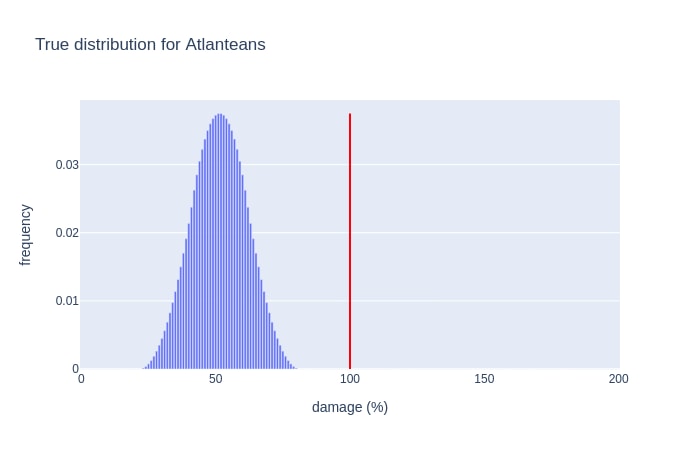
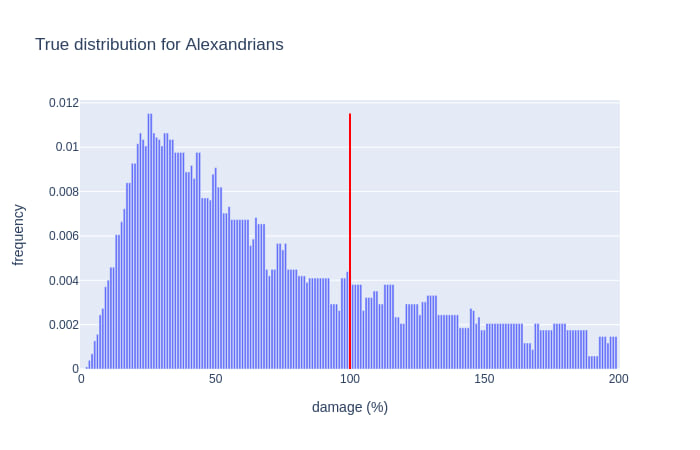
Kraken
Kraken are 2/21 of encounters.
They do 12d8 points of damage.
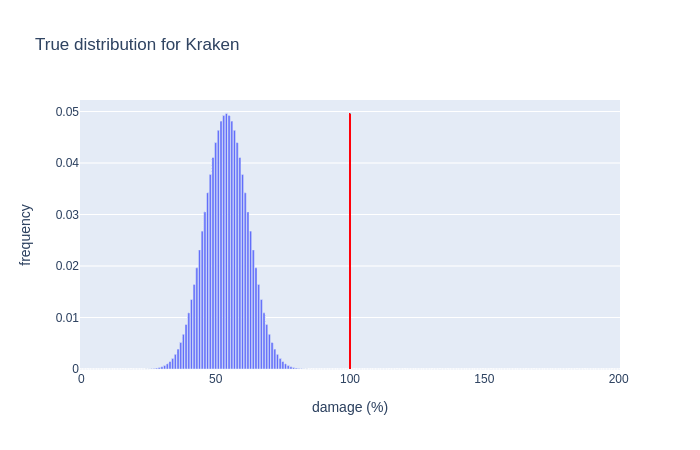
Nessie
Nessie is 1/21 of encounters.
She does 40+10d8 points of damage.
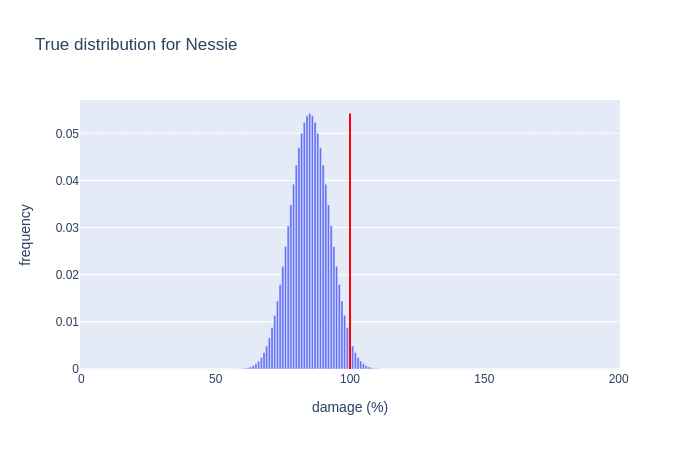
Harpies
Harpies are 1/14 of encounters.
They do 1d4+1d8+1d12 points of damage.
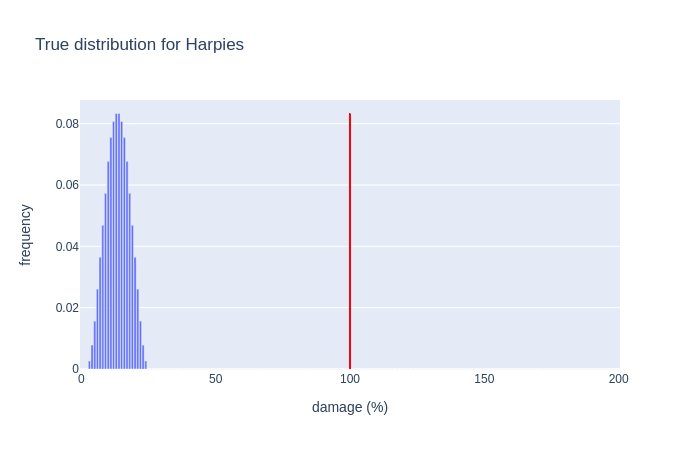
Water Elementals
Water Elementals are 2/21 of encounters.
The Navy has countering the powerful but predictable attacks of Water Elementals down to an art; there are well-known methods for ensuring they only almost destroy a given ship. They do 73+1d12 points of damage.
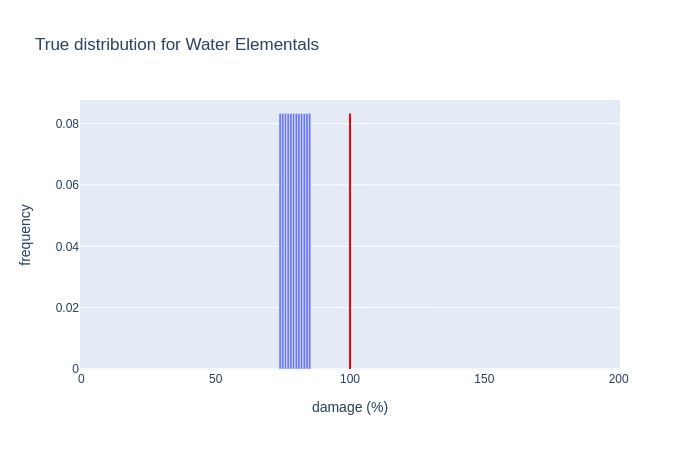
Direction
Direction is irrelevant from perspectives both practical (you have no control over how many trips you take each way) and epistemic (direction happens to have no effect on outcomes).
Time effects
Time has almost no effect. The one exception is that Privateers used to be much more common (and other encounters therefore slightly less common) before 4/1401; this is when your nation’s main rival changed tactics and stopped hiring mercenaries to attack supply ships.
Sinking Risk by Enemy
In the absence of interventions, ~50% of shipwrecks are caused by Demon Whales, ~18% by Crabmonsters, ~31% by Merpeople, ~1% by Nessie, and 0% by other threats.
Strategy
If attempting to optimize odds of survival, your best choices are to buy all oars, arm carpenters, tribute the Merpeople, and buy one extra cannon; congratulations to simon, SarahNibs and Measure for reaching this conclusion.
However, since Pirates never sink ships and Nessie is pretty bad at it, you may wish to take the money you’d spend on the cannon and either hold onto it (to impress the Navy’s accountants) or spend it on foam swords (to impress the Navy’s dockworkers).
Reflections
All else equal, there’s a little extra uncertainty when predicting quantities instead of categories: “is that sudden peak at 14% noise, or a clue to the generating function?”, etc. However, the main reason this challenge was so much more speculative than its predecessors is that the most important information – details of attacks that did 100%+ damage – was censored by the mechanics of the world. In the absence of hard evidence, small errors in inference compound, priors pick up the slack, and considerations like “what genres apply here?” or “is the scenario designer enough of a troll to have Demon Whale damage arbitrarily cap out at 99%?” take on a significance they wouldn’t otherwise.
This is both good and bad. Good because the personal touch adds intrigue to what would otherwise just be data-wrangling; bad because every unit of effort spent psychoanalyzing the GM is a unit of effort not spent on getting better at data-wrangling or on psychoanalyzing reality’s GM (i.e. studying Math and Science). I enthusiastically solicit feedback on this point, as well as on every other point.
Scheduling
The next D&D.Sci challenge should be ready sometime earlyish next month, but nebulous and open-ended work commitments mean I can’t promise anything.